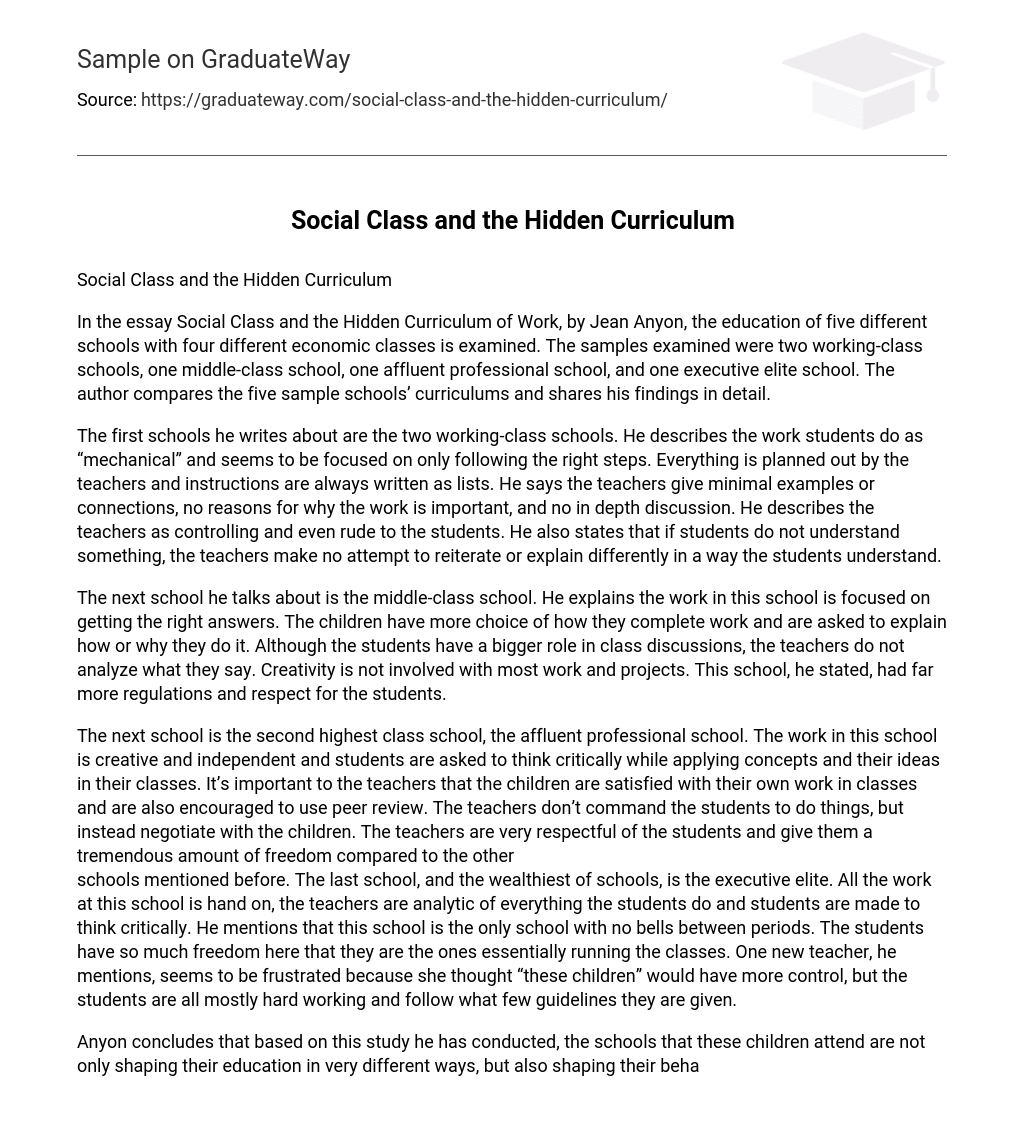In the essay Social Class and the Hidden Curriculum of Work, by Jean Anyon, the education of five different schools with four different economic classes is examined. The samples examined were two working-class schools, one middle-class school, one affluent professional school, and one executive elite school. The author compares the five sample schools’ curriculums and shares his findings in detail.
The first schools he writes about are the two working-class schools. He describes the work students do as “mechanical” and seems to be focused on only following the right steps. Everything is planned out by the teachers and instructions are always written as lists. He says the teachers give minimal examples or connections, no reasons for why the work is important, and no in depth discussion. He describes the teachers as controlling and even rude to the students. He also states that if students do not understand something, the teachers make no attempt to reiterate or explain differently in a way the students understand.
The next school he talks about is the middle-class school. He explains the work in this school is focused on getting the right answers. The children have more choice of how they complete work and are asked to explain how or why they do it. Although the students have a bigger role in class discussions, the teachers do not analyze what they say. Creativity is not involved with most work and projects. This school, he stated, had far more regulations and respect for the students.
The next school is the second highest class school, the affluent professional school. The work in this school is creative and independent and students are asked to think critically while applying concepts and their ideas in their classes. It’s important to the teachers that the children are satisfied with their own work in classes and are also encouraged to use peer review. The teachers don’t command the students to do things, but instead negotiate with the children. The teachers are very respectful of the students and give them a tremendous amount of freedom compared to the other
schools mentioned before. The last school, and the wealthiest of schools, is the executive elite. All the work at this school is hand on, the teachers are analytic of everything the students do and students are made to think critically. He mentions that this school is the only school with no bells between periods. The students have so much freedom here that they are the ones essentially running the classes. One new teacher, he mentions, seems to be frustrated because she thought “these children” would have more control, but the students are all mostly hard working and follow what few guidelines they are given.
Anyon concludes that based on this study he has conducted, the schools that these children attend are not only shaping their education in very different ways, but also shaping their behavior. Children that attend these different schools interact with each other differently, and therefore, the schooling these children receive is contributing to the “unequal” relationships in which we live in today. It seems apparent that the children attending higher-class schools are given an unfair advantage compared to the children attending lower-class schools, which may have much to do with the outcome of these children’s futures. He concludes that although the study was only of a small sample, the findings should lead to more research to see if what this study suggests is true, in attempt to hopefully mend the inequality in which we are all accustomed to today.





